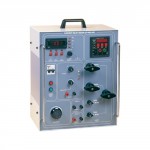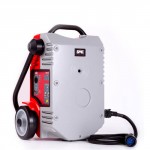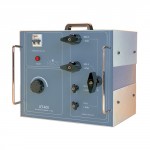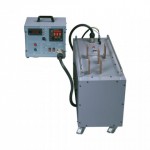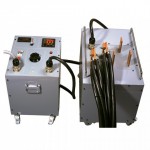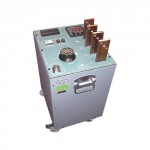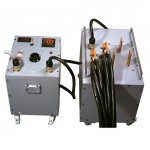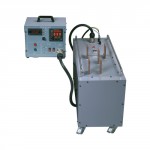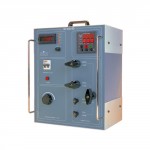Primary Injection Testing Solutions
Primary injection testing is essential in commissioning and verifying a protection scheme since the secondary injection test does not check all the components in the system and the condition of the overall protection installation; unlike the primary injection testing, the secondary injection tests do not simulate the real operating conditions, it would not reveal a defective CT, whether that CT is the correct ratio or polarity, or whether the secondary wiring is correct and serviceable. The primary injection testing is the only way to prove correct installation and operation of the whole protection chain, as involves testing the entire circuit; current transformer primary and secondary windings, relays, trip and alarm circuits, circuit breakers and all wiring are checked. Primary injection testing is often the last test performed in the commissioning and maintenance process, or after any modification, as a functional test of the whole system, not excluding the also needed secondary injection tests that must be performed first. Primary injection testing is also a big help in troubleshooting and corrective maintenance.
Description
Related Products
Additional Information about primary injection testing
Typical applications of primary injection testing
Besides the trip test of the complete loop to determine the integrity of the whole secondary protection circuit, other typical primary injection testing applications are:
- Checking that the MV/HV/LV circuit breakers trip in response to an overcurrent.
- Checking of CT/VT/PT ratios and polarities, to determine that the relationship between primary current and secondary current seen by the relay is correct.
- Checking the correct wiring of the protection system, and that all protective devices are properly connected.
- Checking of overcurrent and earth fault relays through primary injection testing.
- Checking of CT circuits, to verify that all switches and protective relays receive the proper current at the proper angle as expected.
- Testing of reclosers and sectionalizers.
- Thermal tests on busbars, switchgear and electrical panels.
- Testing ground grid installations.
The Raptor, innovation in primary injection testing
The primary injection testing has had traditionally many problems such as test equipment bulky and heavy to get high currents, not accurate testing process due to variac transformer use, not automatic current regulation, user´s choice limited to initial power required, no storage and reporting, etc. All these drawbacks have been solved in the RAPTOR System, drastically improving the existing primary injection testing way in the market.
The system consists of a Master unit which can be upgraded with up to three current Slave sets which add further power capacity to the system. The user is not limited to the power initially determined. In case of more power required, RAPTOR SL sets can be added, or left behind when not needed for the primary injection testing of that day. The Raptor HV, the optional high voltage unit, extends the Raptor applications to tests that require the use of high AC voltage, up to 2 KV.
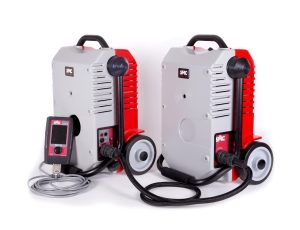 In comparison with the big and heavy traditional variac-based equipment for primary injection testing, the RAPTOR is designed incredibly smaller and lighter than its predecessors, combining a revolutionary high current generation technology, with an automatic smart control, in a really transportable test unit of only 35 Kg, which, by combining some RAPTOR units depending on the application, is able to inject up to 15,000 A and 2000 V.
In comparison with the big and heavy traditional variac-based equipment for primary injection testing, the RAPTOR is designed incredibly smaller and lighter than its predecessors, combining a revolutionary high current generation technology, with an automatic smart control, in a really transportable test unit of only 35 Kg, which, by combining some RAPTOR units depending on the application, is able to inject up to 15,000 A and 2000 V.
An additional advantage to the easy transport is that the units can be much closer to the devices tested, reducing the length of cables, and a significant decrease in power losses by eliminating intermediate connections.
A small handheld unit allows the user to fully control the primary injection testing process, with results storage and reporting capacity, software updates via internet, and configuration tools such as the helpful Raptor Current Calculator. The Raptor includes automatic regulation of the magnitude injected, DSP controlled, being stable regardless of the load changes. The slow and not precise process of manual search for a desired value is not needed anymore… just select your current value and inject.
The Raptor includes a powerful measurement section, factory configured test templates and automatic functions for testing CT/VT/PT, switchgear, relays, breakers, reclosers, contact resistance, ground grid, step & touch, etc. Some applications for primary injection testing of current transformers are the checking of the CT ratio, burden, polarity, phase angle error, magnetization curve, and withstand voltage testing.
For 30 years, SMC has been manufacturing traditional variac-based equipments, the LET units, with a wide choice of power ranges for primary injection testing, but now the Raptor has been designed as the final solution for the main primary injection testing applications required in the commissioning and maintenance of substations and switchgear. The Raptor makes primary injection testing easier, faster and far more efficient, the first non-variac system, which is establishing a new standard of primary test equipment.
For more information, please check the related SMC products for primary injection testing, or contact us.
For additional Information about primary injection testing, see the following contents
- Primary injection test : A wide choice of primary injection test equipment. The Raptor solution, a new way to perform a primary injection test.
- Primary test: The main primary test as the final step in a testing program; an integrated system for any primary test in substation commissioning and maintenance.


